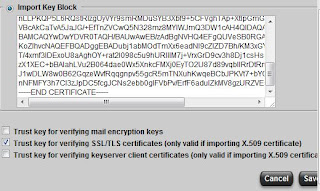 I recently attempted to upgrade our network equipment to the newest version 4.2. In doing so, I received several errors that the servers were out of space and could not be upgraded. After a call to Enterasys support, we identified some files are locations that could be safely removed to free up space for the install.
I recently attempted to upgrade our network equipment to the newest version 4.2. In doing so, I received several errors that the servers were out of space and could not be upgraded. After a call to Enterasys support, we identified some files are locations that could be safely removed to free up space for the install. The following instructions and locations are for the virtual images running in VMware.
DISCLAIMER: Before trying any of the following, if you are unsure about this please consult support to ensure you will not damage your system, or at very least make a snapshot you can revert back to.
- Step was upgrade Wireless Advanced Services if you have it.
- On Console go to the folder /usr/local/Enterasys_Networks/NetSight if there is a folder called .installer, this should be able to be deleted. Next if you go to /usr/local/Enterasys_Networks/NetSight/appdata/logs, it should be safe to delete some of the older log files to free up space.
- On the NAC systems, a lack of space was because of the file stats.out located at /opt/nac/server. It is safe to delete this file and it is probably quite large take up the majority of the space on that partition.
With these done, chmod 777 the installer files and install them, and hopefully everything will go well.
Good Luck





